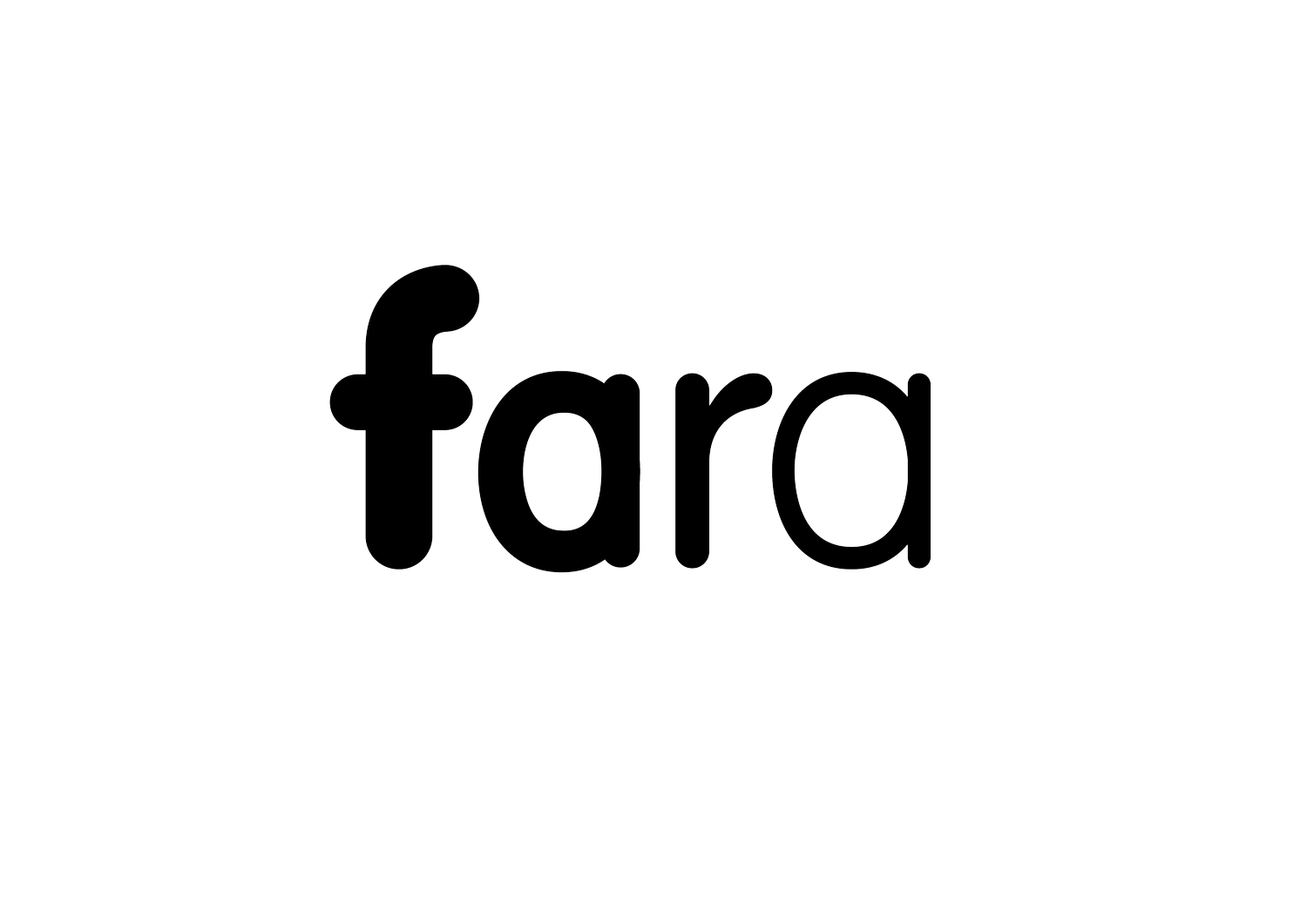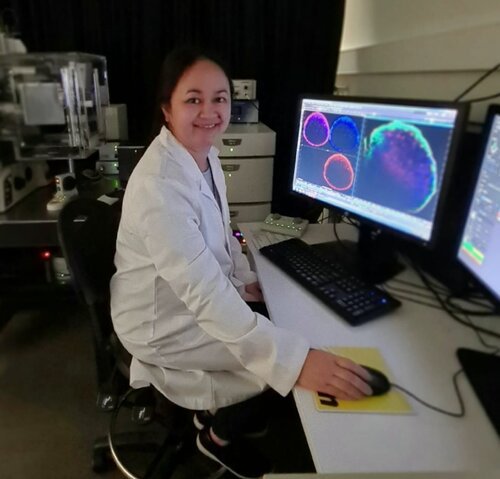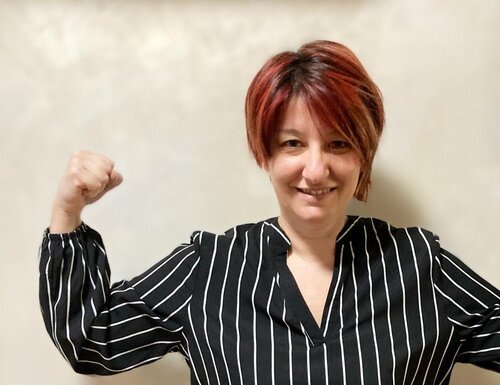
Meet Our Researchers
Meet Our Researchers
fara Australia is very fortunate to have supported many talented researchers from around the world, working tirelessly to find treatments and a cure, for Friedreich Ataxia.
We have compiled a fun Q and A with some of this amazing community below.
-
Where do you work?
Centre for Neuroscience at The University of Melbourne & Redenlab IncWhat FA research are you conducting?
Our group/s are working towards two goals:1. Improve how we detect and measure speech and swallowing difficulties in ataxia to better track disease change and treatment response; 2. develop easy to use and effective therapies for restoring speech and swallowing function ataxia.
What do you hope to achieve for the FA community?
Access to evidence based therapies for improving speech and swallowing function.Proudest moment?
Seeing the positive pilot data from our long awaited speech therapy tool, SpeechATAX. It was brilliant to get feedback from FA’ers saying they felt their speech had improved.Best Meal ever?
It would have to involve wine, my friends and family (with my kids just slightly out of earshot so I could enjoy the meal).Bucket list destination?
I’d like to make my way to the Venice Biennale before it sinks!Current book you are reading?
I just finished Richard Flanagan’s The Narrow Road to the Deep North. Such incredible writing from a great Tasmanian.Current Netflix recommendation? I’m a big Jason Bateman fan, so Ozark would be my favourite at the moment.
What can’t you live without?
My wife and kids – and holidays
-
Where do you work? Department of Chemical Engineering, The University of Melbourne
What FA research are you conducting? I work with materials, including nanoparticles, for biomedical applications. The aim is to improve the way we deliver therapeutics and vaccines to target cells, or where they are needed, using precisely engineered materials. This includes investigation into new materials as non-viral alternatives for the delivery of genetic material (e.g., DNA, mRNA) that can correct or supplement the frataxin protein in FA.
What do you hope to achieve for the FA community? To engineer safe and effective materials that can be applied in gene therapy clinical trials for FA, and ultimately to improve the outcomes for patients living with FA.
Proudest moment? Supervising students and seeing them grow and develop as independent researchers.
Best Meal ever? Chicken biryani made by my housemate's mum who visited from India (when I was doing a postdoc in the US). It was the best biryani; nothing compares!
Bucket list destination? Korea
Current book you are reading? Introducing Harry Potter (and the Philosopher's Stone) to my son.
Current Netflix recommendation? Trese
What can’t you live without? family
-
Where do you work? I am currently working at the Centre for Rare Movement Disorders of the University Hospital of Innsbruck, Austria.
What FA research are you conducting? I started working with FA during my PhD.
At that time, I focused on the involvement of the peripheral nerves, which I investigated by means of punch skin biopsies.
Currently, I am leading a project on the iron metabolism in FA. We know that iron accumulates in the brain and in the heart in FA but have no data about how iron “behaves” in the rest of the body. This is relevant since past trials showed that iron-chelating agents are not beneficial and may even be deleterious, pointing out that the role of iron in FA is probably more complex than thought before. Thanks to previous research in the field of blood disorders, we now know that the main regulator of iron metabolism in the human body is Hepcidin, a hormone produced by the liver. Hepcidin regulates the iron uptake by binding to ferroportin, the only iron-exporting protein on the human cells. Within this project, we investigate the state of the hepcidin-ferroportin axis in the serum and white blood cells of FA patients and carriers. Furthermore, we quantify the iron storages in liver, pancreas and spleen by means of magnetic resonance imaging.
What do you hope to achieve for the FA community? I hope to elucidate relevant mechanisms underlying the role of iron in the development of the disease and thus contribute to the further development of treatment strategies in FA.
Proudest moment? Having received a FARA grant as recognition of the value of my project for FA research.
Best Meal ever? My home-made meatballs (minced meat, 1 egg, 1 boiled potato, parsley, a pinch of nutmeg and lots of grated parmesan).
Bucket list destination?
South Africa
Orlando, Florida (namely: the next ICAR congress)
Isle of Iona, Scotland
Current book you are reading? I have just finished to read the 1st and 2nd Harry Potter book for the umpteenth time.
Current Netflix recommendation? I would recommend something from my birth town: “Suburra”, a crime drama series based on -unfortunately- real events focusing on corruption among organised crime, politicians and churchmen in the city of Rome. It has a great cast and a high dose of suspense.
What can’t you live without? Coffee with biscuits
-
Where do you work? I am working at CUB-Hôpital Erasme, Brussels Belgium. Half-time as a clinician responsible for the neurological ward inpatients and half time in the department of translational functional neuro-imaging.
What FA research are you conducting? I am doing non-invasive functional neuro-imaging studies in individuals with Friedreich Ataxia and healthy subjects. The aims are to understand how the brain and the cerebellum are affected by, and compensate for, Friedreich disorders. The objective of the current study is to assess if cerebellar direct transcranial stimulation can improve Friedreich Ataxia motor and non-motor symptoms.
What do you hope to achieve for the FA community? To provide an alternative/complementary treatment to pharmaceutical agents in Friedreich Ataxia.
Proudest moment? The births and the many accomplishments of my kids :)
Best Meal ever? The first time I ate sushi
Bucket list destination? Seashore around Saint-Malo (Bretagne, France) and Sienna (Italy)
Current book you are reading? Erasure, by Percival Everett
Current Netflix recommendation? Sorry, I don't watch
What can’t you live without? Wife and kids
-
Where do you work? Department of Neuroscience, Monash University
What FA research are you conducting? Our team uses brain imaging approaches to understand where and how things are changing in the nervous system in people with FA.
What do you hope to achieve for the FA community? We are all striving towards treatments, and ultimately, a cure. Our little piece of the puzzle will hopefully help define biomarkers to improve the sensitivity of clinical trials.
Bucket list destination? Patagonia
Current book you are reading? The Power of One by Bryce Courtney
Current Netflix recommendation? I got sucked in by The Queen's Gambit
-
Where do you work? St Vincent’s Institute in Melbourne, Australia.
What FA research are you conducting? Using stem cells made from people with FA, I make beating heart cells to try and understand the ‘whys’ and ‘hows’ of heart disease. I look at how the neurons, the blood vessels and the heart muscle all work together – and how they don’t.
What do you hope to achieve for the FA community? I hope to find some of the key players in FA heart disease, so that we can design specific treatments to help people with FA live longer.
Proudest moment? Publishing my first paper as a true blue scientist
Best Meal ever? Oysters – anywhere, anytime.
Bucket list destination? Ankor Wat
Current book you are reading? The Broken Earth trilogy
Current Netflix recommendation? Avatar – The Last Airbender
What can’t you live without? Anime
-
Where do you work? Monash University, Melbourne (Australia)
What area do you work in? I am working on the TRACK-FA project, a global natural history study to identify biomarkers of disease progression in FA. By doing this we hope to make it easier to test the efficacy of candidate treatments in future clinical trials.
What do you hope to achieve for the FA community? Ultimately, I hope this work leads to more effective treatment for people with FA.
Proudest moment? Organising a community footy match for our school.
Best Meal ever? I love eating out and can’t go past the banquet at Bhang in Brunswick, Melbourne.
Bucket list destination? Walking the Camino. I did a small section in France two years ago and definitely want to do the rest.
Current book you are reading? Echo in the Bone, one of the Outlander series novels.
Current Netflix recommendation? Schitt’s Creek – I could watch this over and over.
What can’t you live without? Coffee!
-
Where do you work? Dept. Biology, University of Rome Tor Vergata (Italy)
What area do you work in? My research group and I are studying the role of adipose tissue in the development of metabolic complications in FA patients.
What do you hope to achieve for the FA community? I hope we will find the way by which frataxin deficiency affects adipose tissue function to suggest new molecular targets to treat FA-related metabolic complications.
Proudest moment? I am always proud of my son
Best Meal ever? I don't remember ... here in Italy you always eat well!
Bucket list destination? Antarctica
Current book you are reading? Hippie (Paulo Coelio)
Current Netflix recommendation? The Serpent
What can’t you live without? I can't live without Wi-Fi connection
-
Where do you work? Children’s Hospital of Philadelphia (CHOP)
What FA research are you conducting? I am interested in understanding a novel function of Frataxin in the nucleus.
What do you hope to achieve for the FA community? I hope to achieve better efficacy and safety for potential therapies that address the needs of the FA community.
Bucket list destination? Fiji!
Current book you are reading? People We Meet On Vacation by Emily Henry
Current Netflix recommendation? I The Chair
-
Where do you work? Victorian Clinical Genetics Services, Murdoch Children’s Research Institute
What FA research are you conducting? I work largely in clinical studies and clinical trials. My team and I work to identify areas of impact of Friedreich ataxia and to study these in detail.
We aim to identify ways of testing people to ensure trials are as efficient as possible. We undertake pharmaceutical and other intervention trials. Currently we are conducting a trial of resveratrol and we are involved in the omaveloxolone and vatiquinone trials. We are doing a randomised trial of rehabilitation. We have worked to have our campuses ready to do gene therapy trials in the coming years.
What do you hope to achieve for the FA community? Identify therapies that slow progression of Friedreich ataxia and then hopefully therapies that reverse symptoms.
Proudest moment? Personal: watching my sons grow into fine adults. Friedreich ataxia: identifying raised mitochondrial iron in fibroblasts from people with the condition and identifying and testing resveratrol as a potential therapy.
Best Meal ever? Restaurant: Guy Savoy, Las Vegas with Chip Wilmot - best and most expensive!
Bucket list destination? Mt Everest base camp
Current book you are reading? Once Upon a Time in Hollywood
Current Netflix recommendation? I don’t watch a lot of Netflix
What can’t you live without? My family
-
Where do you work? St Vincent's Institute of Medical Research
What FA research are you conducting? Research vision is to develop effective and translatable treatments for cardiovascular diseases. Specifically, my group is establishing a pre-clinical human model of FA heart disease for discovery of new therapeutic targets.
What do you hope to achieve for the FA community? Identify novel effective treatments for FA heart disease.
Proudest moment? Proud dad to a dog (Axel)
Best Meal ever? Degustation at Chin Chin (Melbourne)
Bucket list destination? Scandinavia
Current book you are reading? I’m not a bookworm
Current Netflix recommendation? Offspring (A drama set in Melbourne suburb, Fitzroy)
What can’t you live without? My miniature Schnauzer, Axel
-
Dottori Lab (Mirella Dottori, Sara Miellet, Amy Hulme, Simon Maksour and Mitchell St Clair-Glover)
Where do you work? Illawarra Health and Medical Research Institute, University of Wollongong, Wollongong, NSW
What FA research are you conducting? Our research is focused on using FA patient-derived stem cells to model the disease ‘in the dish’ for the purpose of screening candidate therapies. These therapies include gene therapy approaches to deliver Frataxin to the nervous system.
What do you hope to achieve for the FA community? Our major goal and hope is to use FA stem cells to identify a novel therapy to effective halt and treat the progressive neurodegeneration occurring in FA.
Proudest moment? Achieving results in our research that will make a difference to FA.
Best Meal ever? Our mum’s cooking
Bucket list destination? Iceland, Yosemite National Park, Machu Picchu…to name a few!
Current book you are reading? Where the Crawdads Sing by Delia Owens…and PhD Theses.
Current Netflix recommendation? Snowpiercer and The Queen’s Gambit
What can’t you live without? Coffee and hot chocolates 😊
-
Where do you work? Monash University in Melbourne, Australia
What FA research are you conducting? I am working on the TRACK-FA project, a global natural history study to identify biomarkers of disease progression in FA.
By doing this we hope to make it easier to test the efficacy of treatments in future clinical trials.
What do you hope to achieve for the FA community? The hope is to improve the quality of life for those suffering with FA.
Proudest moment? The birth of my children
Best meal ever? Sea food linguine
Bucket List destination? Valley of the Kings, in Egypt
Current book you are reading? Nothing specific
Current Netflix recommendation? Suits
What can’t you live without? Coffee!
-
Where do you work? Monash University, Melbourne (Australia)
What area do you work in? I am working on the TRACK-FA project, a global natural history study to identify biomarkers of disease progression in FA. By doing this, we hope to make it easier to test the efficacy of candidate treatments in future clinical trials.
What do you hope to achieve for the FA community? The hope is to improve the quality of life for those suffering with FA.
Proudest moment? Getting a place in honours at Monash University.
Best meal ever? Porterhouse steak from Bluestool - medium rare with garlic sauce.
Bucket List destination? Mount Fuji and the Fuji International speedway in Japan.
Current book you are reading? Brief Answers to the Big Questions by Stephen Hawking.
Current Netflix recommendation? The Crown. It’s a must watch!
What can’t you live without? My family 😊
-
Where do you work? My lab is located at the University of California, San Diego
What FA research are you conducting? My group works on the development of a new stem cell gene therapy approach for FA, and on understanding the role of the microglia cells (immune cells in the brain) in our therapeutic approach and in the FA disease.
What do you hope to achieve for the FA community? We hope to find a better treatment for FA
Proudest moment? In my career, my proudest moment was when we received FDA-approval to start a clinical trial using stem cell and gene therapy for cystinosis, an inherited disease leading to multi-organ failure and death.
Best Meal ever? I love crepes
Bucket list destination? Tahiti, Australia, Peru
Current book you are reading? I read books in French, currently I am reading “La relique du Chaos” de Giacometti and Ravenne
Current Netflix recommendation? Blue Miracle
What can’t you live without? My husband and kids
















